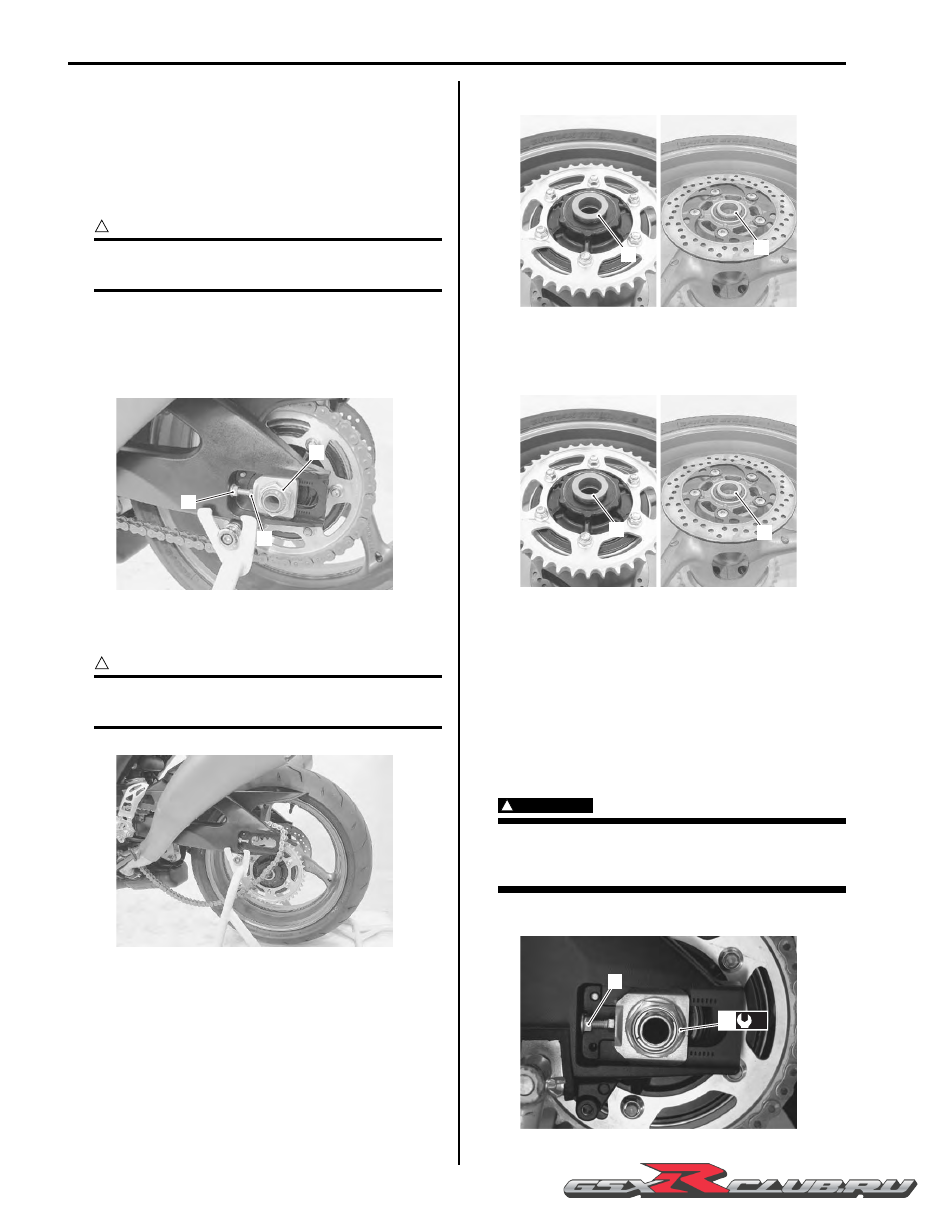Suzuki GSX-R1000. Service Manual - part 30

2D-11 Wheels and Tires:
Rear Wheel Assembly Removal and Installation
B947H12406008
Removal
1) Loosen the axle nut (1).
2) Raise the rear wheel off the ground and support the
motorcycle with a jack or wooden block.
CAUTION
!
Make sure that the motorcycle is supported
securely.
3) Remove the axle nut (1).
4) Loosen the left and right lock-nuts (2) and turn in the
adjuster bolts (3).
5) Draw out the rear axle.
6) Remove the rear wheel by disengaging the drive
chain.
CAUTION
!
Do not operate the rear brake pedal with the
rear wheel removed.
7) Remove the collars (5) and (6).
Installation
1) Install the collars (1) and (2).
2) Remount the rear wheel and rear axle, tighten the
rear axle nut (3) temporarily.
3) Adjust the chain slack after installing the rear wheel.
Refer to “Drive Chain Inspection and Adjustment” in
Section 0B (Page 0B-14).
4) Tighten the rear axle nut (3) to the specified torque.
Tightening torque
Rear axle nut (a): 100 N·m (10.0 kgf-m, 72.5 lbf-
ft)
WARNING
!
After remounting the rear wheel, pump the
brake pedal several times to check for proper
brake operation.
5) Tighten both chain adjuster lock-nut (4) securely.
1
2
3
I947H1240014-02
I947H1240015-01
6
5
I947H1240017-02
2
1
I947H1240026-02
4
(a)
3
I838H1240002-01